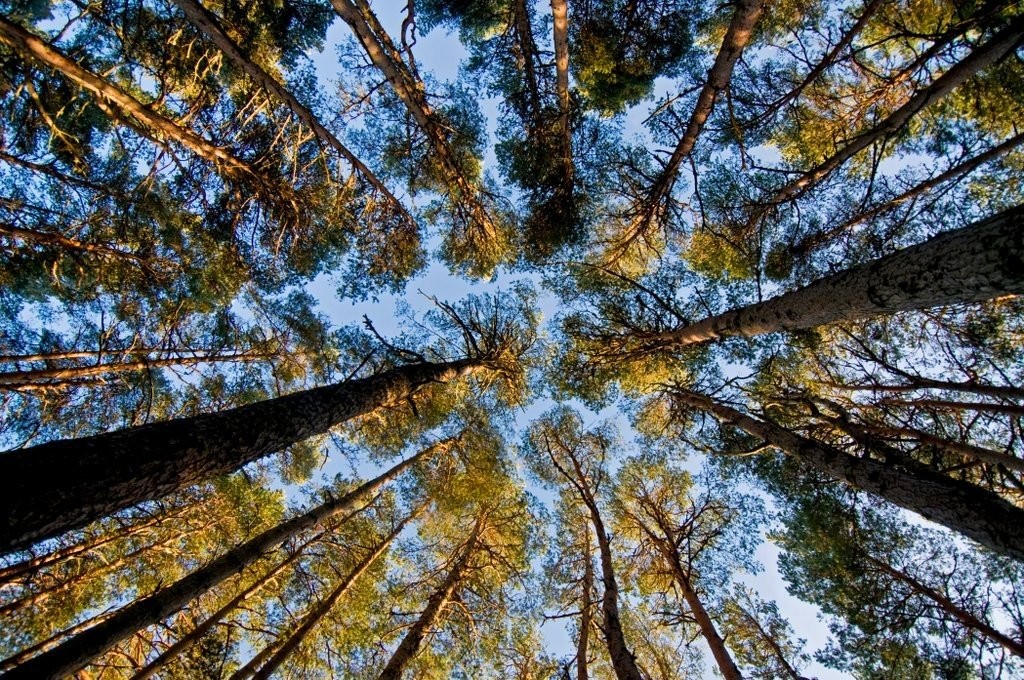Special Landscape Qualities – Trees, Woods and Forests
General Qualities * The Mountains and Plateaux * Moorlands * Glens and Straths * Trees, Woods and Forests * Wildlife and Nature * Visual and Sensory Qualities * Culture and History * Recreation
Trees, Woods and Forests
Dark and venerable pine forest
There are large tracts of ancient Scots pine, long renowned for their beauty, conservation value and their timber. They occur both as pure stands and in mosaic with plantation. Where the woodland is open, the individual trees with their dark foliage and orange bark, rise with a stately grace above the heather. Each has a distinctive sculptural shape, often with a dominance of horizontals. Where the woodland is closed, verticals dominate, with tall trunks and a dark green canopy above an understorey of blaeberry, heather and mosses. Under this canopy, the pervading stillness is reminiscent of a hushed cathedral with its tall pillars and vaulted roof.
Light and airy birch woods
In many areas birch woods provide a lighter and more open contrast to the darker pines. Some of these form dense stands on hill slopes and river banks, others comprise airy wood pasture, with copses and individual trees and an understorey of grass. These latter are often found on drumlins and hummocky moraines and create distinctive and attractive variations in the landscape. Bushes of juniper are a common element in many woods of both birch and pine, a mid-storey of contrasting form and colour. Woods of birch tend to allow intermittent views to a landscape beyond, through clearings and lightly-spaced trees, or during the leafless winter months.
Parkland and policy woodlands
Policy woodlands and designed landscapes with their tall, exotic conifers, planted groups of trees, avenues, field boundary trees and shelter belts, provide an ordered contrast to the native woodlands, commercial plantations and surrounding hills and moorland. These are found particularly in the Blair Atholl and Deeside areas.
Gardens and designed landscapes – grounds consciously laid out for artistic effect – are an important element of Scotland’s historic environment and landscape. Such spaces play a big role in our heritage. 10 Gardens and Designed landscapes in the national Park are designated Inventory Sites. Download Scotland’s Inventory of Gardens and Design Landscapes 2016.
Browse a map of inventory gardens and designed landscapes
33 further gardens and designed landscapes within the CNP have been identified as making an important contribution to the character and special landscape qualities of the CNP, especially in the glens and straths. Download the CNP Historic Designed Landscapes Project Summary Report here, if you require further guidance on any of the 33 areas please contact us.
Long association with forestry
For centuries the great pine forests of Speyside and Deeside have been important for timber, often with the logs floated down the rivers to the sea. Further south, the Atholl Estate is an example of an early pioneer of both commercial forestry and the creation of designed landscapes. Hence there is a long legacy of managed forests, logging and forest industries which continues to this day. This legacy includes remnants of log dams, iron furnaces, saw mills and tramways, as well as numerous modern plantations. It also includes the continuing tradition of timber cladding, wooden porches and wooden outbuildings.
